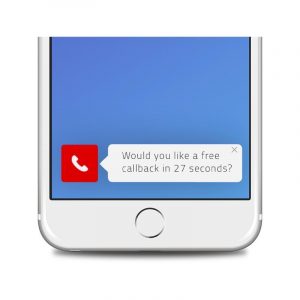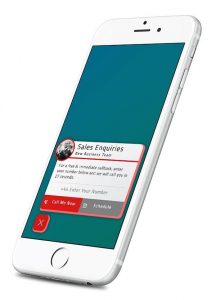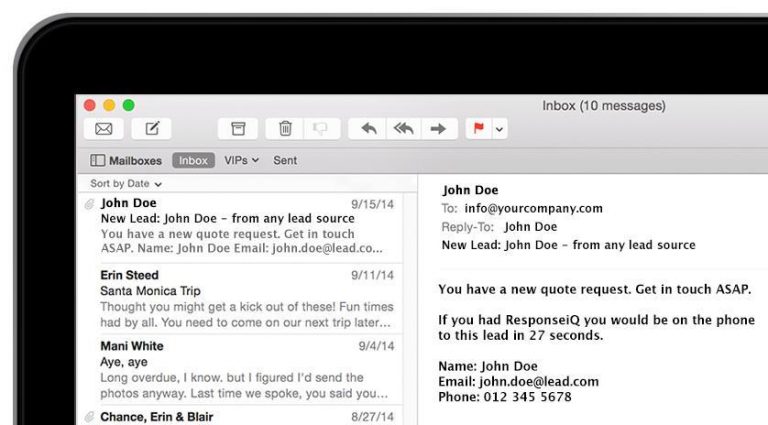
This isn’t one of those articles that’s going to give you an example of a totally unique business who hit upon a genius (and completely irreplicable) trick to increase their success. Nor are we going to give you a yawning long list of actions you have to take to replicate these kinds of figures for your own business. What they did was easy and you can do it too. There’s no catch, no hook, it’s plain simple.
My name is Casey Solomon and I’m Head of Marketing at bOnline. I’m going to tell you how we increased inbound calls by 16.5% over a 10-week period, and how you can do it too…
Maybe, like us, you’ve experienced one of the following problems:
- Limited marketing budgets for lead generation
- Low contact rates for landing page form submissions and “call me back” requests
- Sales agents struggling to convert potential customers who phone up
Unless you’re a business monolith with unlimited resources, or extraordinarily lucky, you’ll have grappled with one or all of these problems at some point.
We (bOnline) are the quickest, simplest way for small businesses to setup and manage their IT infrastructure – Email, Website, Broadband and Cloud Phones.
We were desperately trying to grow, but even though the numbers of website views per day looked pretty good, those website visitors just weren’t converting.
Trying to attract more customers to the site to push up the number of conversions by paying for extra ads was a no go. Increasing budgets just wasn’t a long-term or sustainable option. What we needed was a cost-effective solution to increase our qualified leads from our current number of web visitors.
So, what did we do first?
We had a sales team of 10, so the FIRST thing we did was try to ensure the sales team had the best training possible.
The SECOND thing we did, was to incorporate an on-page chat widget in the hope that it would boost CRO. So, what happened?
Although we found web visitors were using it to ask questions, once they had their answer they’d disappear – sometimes – never to be heard from again.
This isn’t an indication that there was anything wrong with the answers we were giving, or the quality of the inbound traffic; far from it. This is actually a very common problem that almost always occurs with on-page chat widgets… as we found out belatedly. Whether it’s chat bots or live chat, it’s extremely hard to hold a potential customers attention using this type of medium. Not only that, typing is far more time consuming that talking – so the sales team were spending precious hours on a less effective way of engaging with web visitors.
As we soon found out, chatbots and live chat can be a brilliant tool for customer service, but it’s not so great if you’re trying to increase leads.
Finding the solution!
I stumbled across the solution when researching the best ways to increase on-site conversion.
I started reading the results of the MIT lead response management study, published in the Harvard Business Review and concerned research by James Oldroyd, PHD, visiting research fellow at M.I.T & David Elkington of InsideSales.com.
Oldroyd and Elkington had looked at 3 years of data across companies that respond to web-generated leads. The study incorporated 15,000 unique leads and over 100,000 call attempts. It had found the key to exactly what bOnline needed, he read on… The focus of the study had been to determine how companies should best respond to their leads in order to maximise results and minimise effort. Many of the results in the study were first call attempts, indicating how to get the job right first time.
In regards to response time, the study found that when measuring contact and qualification rates, response time was the most significant factor. The study measured the time between the second a lead completes a web form until the sales representative contacts them.
They found the best time to respond was in the first five minutes. The odds of connecting to and qualifying a lead in 5 minutes versus 30 minutes, drop 2100%. From 5 minutes to 10 minutes the call to qualification rate drops by 400%
BUT how the hell were we going to to achieve a five minute response time to leads for bOnline? Also, this still didn’t solve the problem of persuading web visitors to call in the first place.
Finding ResponseiQ
After searching online, I found ResponseiQ. ResponseiQ worked by implementing a few simple changes to a website which linked sales agents to web visitors in a matter of seconds. It CRUCIALLY for bOnline, ALSO worked to increase calls to websites without needing to increase web traffic numbers.
It did this with a series of clever tactics:
1. Firstly, it creates a widget that sits on your website that gives your website visitors the ability to request an instant call from your sales team. The tool has lots of other great features, all of which help its clients enjoy a 25-40% increase in call volume from the same amount of web traffic.


2. Secondly, it allows your sales team to respond instantly, by phone, to web-generated leads. Your sales team are suddenly able to be on the phone to your leads, with all of the lead info in front of them within seconds – before leads have left your website or spoken to your competition. All sales reps need to do is press “1” and they’re connected.

The best thing, was that everything could be introduced in just 1 step that will take your business just minutes, with no need for a web developer.
What Happened Next?
I was pretty nervous about implementing the ResponseiQ widget and removing our on-page chat widget. Would people really call rather than chat? I was skeptical, but something needed to change, so we went ahead.
Immediately and dramatically, there was an increase in phone calls over landing page forms. This trend was quickly realised and sustained. All of a sudden, agents were wasting less valuable time on chat and spending more time on the phone with serious leads, meaning that over just a short period of time, even the quality of interaction increased!
Lead conversion increased and overall cost per lead went down. Most notably inbound calls from landing pages increased 16.5% over a 10 week period, leading to an increase in sales.
Since implementing the tool, there was also renewed urgency towards inbound calls and competitiveness from the team, removing the complacency seen previously with email callback requests.
Not only that, there were some surprising but important discoveries…
Sales team training had been pretty good before, but we had been missing some crucial insights. The previous system of recording sales calls had been clunky and time consuming and so the sales team and trainers couldn’t listen back to calls quickly or easily.
With ResponseiQ, the sales team could easily listen to their own, and the rest of the team’s sales calls. Crucially, this enabled bOnline to review and improve our sales pitches, focussing on each individual sales agent to concentrate on the areas we needed to improve.
How did customers respond?
Potential customers were impressed, if not shocked, at our speed to return/answer their call in the 27 seconds the widget promised. It’s a great first impression when you make a promise and keep it to a potential customer and you have only known each other for under 30 seconds.
Once they impressed callers by keeping their word, the rest of the conversation and sale goes a lot smoother with that important trust built.
Conclusion
ResponseiQ is more than a software, but a committed partner in the battle of winning new business. It’s been a great decision for bOnline and now we can’t picture running our sales team without it. It really is value for money and does what it says on the tin.
They’re a pretty helpful bunch, so if you think this could benefit your business, check out their free trial today. You won’t look back!